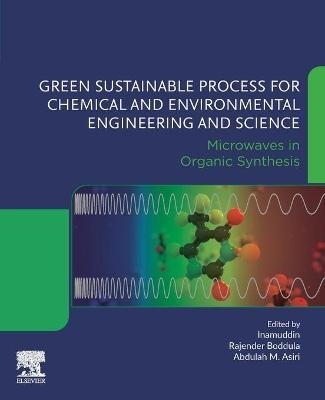
Green Sustainable Process for Chemical and Environmental Engineering and Science
Elsevier Science Publishing Co Inc (Verlag)
978-0-12-819848-3 (ISBN)
Dr. Rajender Boddula is currently working as CAS-PIFI Fellow in the CAS Key Laboratory of Nanosystems and Hierarchical Fabrication, National Center for Nanoscience and Technology, Beijing, China. He has published many scientific articles in international peer-reviewed journals and has authored nine book chapters, and also serving as editorial board member and referee for reputed international peer-reviewed journals. His specialized areas of energy conversion and storage technologies, which include nanomaterials, graphene, polymer composites, heterogeneous catalysis, photoelectrocatalytic water splitting, biofuel cell, and supercapacitor applications Prof. Abdullah M. Asiri is the Head of the Chemistry Department at King Abdulaziz University since October 2009 and he is the founder and the Director of the Center of Excellence for Advanced Materials Research (CEAMR) since 2010 till date. He is the Professor of Organic Photochemistry. His research interest covers color chemistry, synthesis of novel photochromic and thermochromic systems, synthesis of novel coloring matters and dyeing of textiles, materials chemistry, nanochemistry and nanotechnology, polymers and plastics. A major achievement of Prof. Asiri is the discovery of tribochromic compounds, a class of compounds which change from slightly or colorless to deep colored when subjected to small pressure or when grind. This discovery was introduced to the scientific community as a new terminology published by IUPAC in 2000. This discovery was awarded a patent from European Patent office and from UK patent. He is also a member of the Editorial Board of various journals of international repute. He is the Vice- President of Saudi Chemical Society (Western Province Branch). He holds four USA patents, more than 800 Publications in international journals, seven book chapters, and ten books
1. Introduction, activities and advantages of microwave-assisted organic synthesis2. Microwave-assisted oxidation reactions3. Microwave-assisted reduction reactions4. Microwave-assisted protection and deprotection reactions5. Microwave-assisted stereoselective organic synthesis6. Microwave-assisted stereospecific organic synthesis7. Microwave-assisted addition-type reactions 8. Microwave-assisted condensation reactions9. Microwave-assisted alkylation reactions10. Microwave-assisted phenolic compounds synthesis11. Microwave-assisted aqueous vs biphasic organic synthesis12. Microwave-assisted fluoroorganics13. Microwave-assisted heterocyclics14. Microwave-assisted biological-active organic synthesis15. Microwave-assisted catalyst-free organic synthesis16. Microwave-assisted for solvent-free organic synthesis17. Microwave catalysis in Organic synthesis18. Microwave-assisted multi-component reactions19. Microwave-assisted Grignard reactions20. Microwave-assisted supported reagents21. Microwave-assisted C-H activation reactions22. Microwave-assisted C-N formation reactions23. Microwave-assisted coupling reactions24. Microwave-assisted bio-fuel production25. Microwave-assisted polymer synthesis26. Microwave-assisted functionalized carbon synthesis27. State of the art and perspectives of Microwave-assisted organic synthesis
| Erscheinungsdatum | 03.09.2020 |
|---|---|
| Sprache | englisch |
| Maße | 191 x 235 mm |
| Gewicht | 1500 g |
| Themenwelt | Naturwissenschaften ► Chemie ► Technische Chemie |
| Technik | |
| ISBN-10 | 0-12-819848-6 / 0128198486 |
| ISBN-13 | 978-0-12-819848-3 / 9780128198483 |
| Zustand | Neuware |
| Haben Sie eine Frage zum Produkt? |
aus dem Bereich


